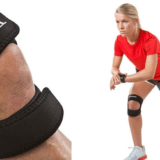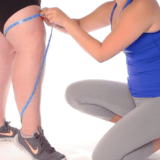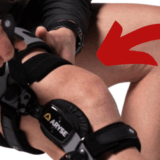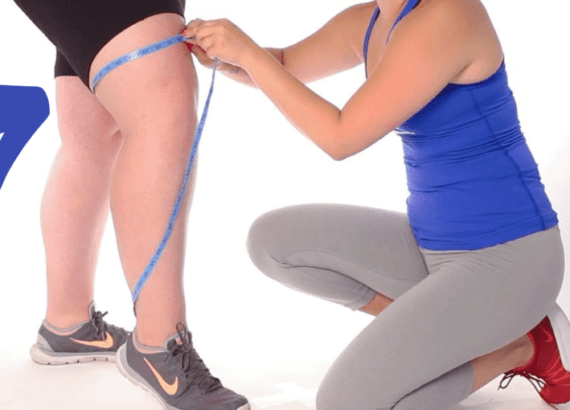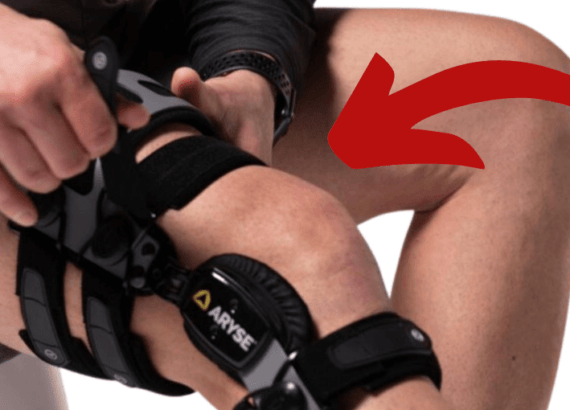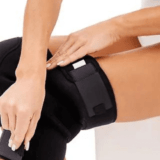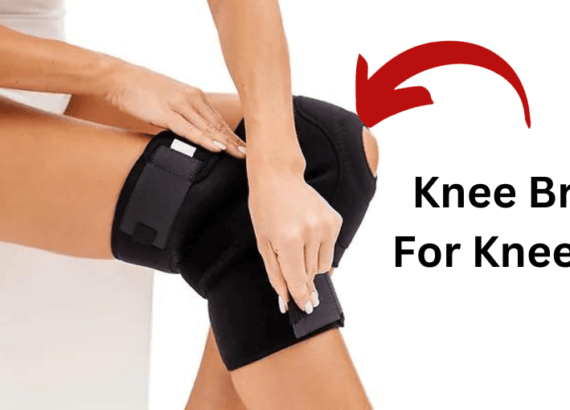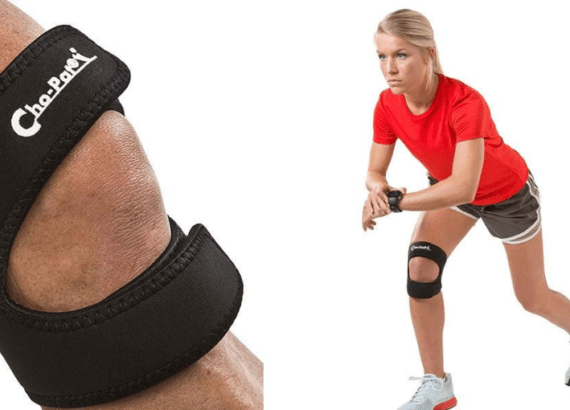The Ultimate Guide: How to Put on a Knee Brace Like a Pro
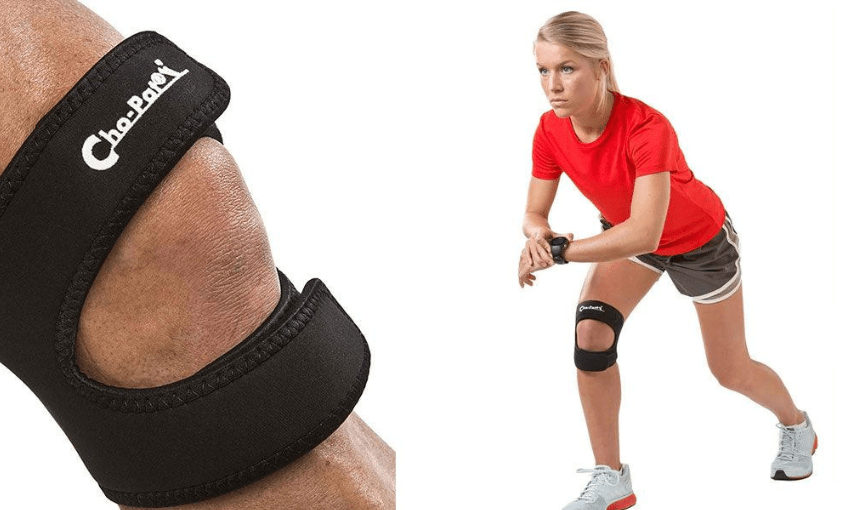
Whether you’re dealing with a knee injury, chronic pain, or simply seeking preventive measures for strenuous activities, wearing a knee brace can provide invaluable support and stability.
However, knowing how to put on a knee brace is essential to ensure its effectiveness and prevent further damage.
Understanding the significance of wearing a knee brace goes beyond just providing support.
These specialized devices can aid in reducing pain, promoting healing, and preventing further injuries by stabilizing the knee joint
From athletes looking to prevent sports-related injuries to individuals seeking relief from conditions such as arthritis or ligament damage, learning the proper technique for applying a knee brace is essential.
In this blog post, we will cover various types of knee braces, including compression sleeves, hinged braces, and immobilizers, and guide you through the process of selecting the right one for your needs.
We will also delve into the importance of carefully measuring your knee to ensure a proper fit, as well as discuss common mistakes to avoid when putting on a knee brace.
Understanding your knee brace
Understanding your knee brace is essential for properly utilizing its benefits. A knee brace is a supportive device designed to provide stability and protection to the knee joint.
It is commonly used for various reasons, including injury prevention, post-injury rehabilitation, and managing chronic conditions like arthritis.
There are different types of knee braces available, each serving a distinct purpose. Prophylactic knee braces are designed to prevent injuries, particularly in sports that involve high-impact movements.
Functional knee braces are intended for individuals recovering from knee injuries. They provide support and stability during the healing process.
When selecting a knee brace, it is crucial to consider factors such as the level of support needed, the specific condition or injury, and personal comfort.
Knee braces come in various styles, including sleeves, straps, hinged braces, and wrap-around designs. It is essential to choose one that best suits your needs and provides the desired level of support.
Wearing a knee brace correctly is equally important. It should fit snugly but comfortably on your knee, without restricting blood flow or causing discomfort.
Reading and following the instructions provided by the manufacturer is essential to ensure proper usage.
It is recommended to consult with a healthcare professional or an orthopedic specialist to get guidance on using your knee brace correctly.
Putting on a Knee Brace Properly
Properly putting on a knee brace is important to ensure its effectiveness and prevent injuries. Here’s a step-by-step guide to help you put on a knee brace correctly:
Choose the Right Knee Brace
Make sure you have the appropriate knee brace for your condition or injury. Different knee braces offer varying levels of support, so consult with a healthcare professional to find the right one for you.
Prepare Your Knee
Ensure your knee is clean and dry before putting on the brace. This will help prevent skin irritation and optimize the brace’s grip.
Position the Brace
Hold the brace with both hands, ensuring the opening aligns with your kneecap. The straps and hinges (if present) should be on the outside, while the opening should face upwards.
Slide the Brace Over Your Foot
Carefully slide the brace over your foot and position it around your knee. Slowly lift it up, making sure the opening is centered over your kneecap.
Align the Brace
Align the brace so it is centered and properly positioned on your knee joint. The top edge of the brace should rest about 1 to 2 inches below the crease at the back of your knee.
Secure the Straps
Begin fastening the straps, starting with the one closest to your calf. Gradually tighten each strap until the brace is snug but not overly tight.
Ensure the straps are fastened securely, but be mindful not to cut off circulation or cause discomfort.
Adjust the Brace if Needed
Once the straps are secure, ensure the brace fits properly by bending your knee and performing a few walking or standing movements. Make any necessary adjustments to ensure comfort and stability.
Importance of Proper Knee Brace Fitting
Proper knee brace fitting is crucial for several reasons, as it directly impacts the effectiveness and safety of the brace. Here are the key reasons why proper fitting is important:
- Support and stability: A well-fitted knee brace provides the necessary support and stability to the knee joint. It can help stabilize the knee, reduce pain, and prevent further injury. A brace that is too loose may not provide sufficient support, while one that is too tight can cause discomfort or restrict movement.
- Optimal compression: Some knee braces provide compression, which can help reduce swelling, increase circulation, and support the muscles and ligaments around the knee. A properly fitted brace ensures that the compression is applied evenly and effectively, providing the desired therapeutic benefits.
- Range of motion: A knee brace should allow for an appropriate range of motion while still providing adequate support. If a brace restricts movement too much, it can hinder normal activities or muscle function. On the other hand, if a brace is too loose, it may not provide enough stability during movement.
- Comfort and compliance: A well-fitting knee brace is more comfortable to wear, making it more likely that the wearer will comply with usage guidelines. If a brace is uncomfortable or causes pain, individuals may be less inclined to wear it consistently, which can diminish its effectiveness.
- Prevent skin irritation: Improperly fitted knee braces may rub against the skin, causing irritation, redness, or even sores. A properly fitted brace should have appropriate padding and straps to minimize skin contact and friction, reducing the likelihood of skin-related issues.
Tips for Avoiding Common Mistakes
To avoid common mistakes when putting on a knee brace, consider the following tips:
Consult a Healthcare Professional
Seek guidance from a healthcare professional who can assess your condition and provide recommendations on the appropriate knee brace for your specific needs. They can also guide you on proper fitting techniques.
Read the Instructions
Carefully read and understand the manufacturer’s instructions that come with your knee brace.
These instructions often provide valuable information on fitting, usage, and maintenance.
Choose the Right Size
Ensure you select the correct size of knee brace that matches your measurements.
Too small a brace can be uncomfortable and restrict circulation, while a brace that is too large may not provide proper support.
Align the Brace Properly
Pay attention to aligning the brace correctly with your knee joint. The opening should be centered over your kneecap, and the top edge of the brace should rest about 1 to 2 inches below the crease at the back of your knee.
Secure the Straps Appropriately
Fasten the straps securely but avoid over-tightening. The brace should be snug without cutting off circulation or causing discomfort.
Follow the recommended strap fastening order and adjust them as needed for proper fit and support.
Regularly Check and Adjust
After putting on the knee brace, test its fit by walking, bending your knee, and performing other movements. Make any necessary adjustments to ensure comfort, stability, and proper support.
Removing and Cleaning the Knee Brace
Cleaning and maintaining your knee brace is important to ensure it remains effective, odor-free, and comfortable to wear. Here are the steps to remove and clean a knee brace properly:
- Wash Your Hands: Always start by washing your hands to ensure they are clean before handling the brace.
- Find a Comfortable and Well-lit Area: Choose a clean and well-lit area to work on your knee brace.
- Gather Supplies:
- Mild Soap or Detergent
- Warm Water
- Soft Cloth or Sponge
- Towel
- If your knee brace has removable padding or straps, make sure to remove these before cleaning.
- Remove the Brace:
- Loosen any straps or fasteners on the brace.
- Carefully slide or lift the knee brace off your leg. Be gentle to avoid any unnecessary strain.
- Clean the Brace:
- Fill a basin or sink with warm water and add a small amount of mild soap or detergent.
- Submerge the knee brace in the soapy water.
- Use a soft cloth or sponge to gently scrub the brace, paying special attention to areas that come into direct contact with your skin, such as the interior padding.
- Be cautious not to use excessive force or abrasive materials, as this may damage the brace.
- Rinse the brace thoroughly with clean, warm water to remove any soap residue.
- Dry the Brace:
- Use a clean towel to pat the knee brace dry. Ensure it is completely dry before reassembling or storing it.
- Avoid exposing the brace to direct sunlight or heat sources, as excessive heat can damage the materials.
- Reassemble the Brace (if necessary):
- If your knee brace has removable padding or straps, follow the manufacturer’s instructions to reattach them.
- Inspect for Damage: While cleaning, inspect the brace for any signs of wear, tear, or damage. If you notice any issues, consult the manufacturer’s recommendations for repair or replacement.
- Store Properly: Store your knee brace in a cool, dry place when not in use to prevent mold or mildew growth. Make sure it’s protected from dust and direct sunlight.
- Follow Manufacturer’s Instructions: Always refer to the specific care and cleaning instructions provided by the manufacturer, as different knee braces may have unique maintenance requirements.
FAQ
Here are some frequently asked questions (FAQs) about knee braces:
What is a knee brace?
A knee brace is a supportive device that is worn around the knee to provide stability, alleviate pain, and help prevent or recover from injuries or medical conditions affecting the knee.
Who can benefit from wearing a knee brace?
Knee braces are commonly used by people with knee injuries, such as ligament sprains or tears, meniscus tears, knee osteoarthritis, or patellar instability.
Athletes who participate in high-impact sports may also wear knee braces for preventive and supportive purposes.
Are knee braces adjustable?
Yes, many knee braces are adjustable to provide a customized fit. They often have straps, buckles, or fasteners to allow for adjustments according to individual needs and comfort.
Can knee braces be worn during physical activity?
Yes, depending on the type and severity of the knee injury, many knee braces are designed to be worn during physical activity.
They can provide support, reduce strain on the knee joint, and help prevent further injury. However, it’s important to consult a healthcare professional for guidance on wearing a brace during physical activity.
How do I choose the right knee brace for me?
Choosing the right knee brace depends on factors such as the type and severity of your knee injury or condition, your activity level, and the recommendations of your healthcare provider.
It’s advisable to seek professional advice from a doctor or physical therapist to ensure you select the appropriate brace for your specific needs.
How often should I clean my knee brace?
The frequency of cleaning your knee brace depends on how frequently you wear it and the level of sweat and dirt accumulation.
As a general guideline, it’s recommended to clean your knee brace every few weeks or when it becomes visibly dirty or starts to develop an odor.
Conclusion
In conclusion, understanding how to correctly put on a knee brace is vital for individuals who require support and stability for their knee joints. The process involves a few straightforward steps:
1. Ensure the knee and the brace are clean and dry.
2. Identify the top and bottom of the brace.
3. Align the brace with your knee, focusing on proper placement over the patella (kneecap).
4. Fasten the brace securely using the attached straps, starting from the top and working your way down.
5. Adjust the straps to achieve a snug and comfortable fit, avoiding excessive tightness that may restrict blood flow or cause discomfort.
Mastering the technique of donning a knee brace is essential for effectively managing knee injuries, providing support during physical activities, and aiding in the healing process.
However, it’s important to remember that the guidance of a healthcare professional is crucial.
Consult with them to ensure the brace is the right choice for your specific condition, and always follow their recommendations regarding fit and usage.
If you experience persistent pain or discomfort, seek medical attention promptly to address any underlying issues.

As a dedicated medical professional with years of experience, Dr. Roksana Parveen understands the importance of taking a comprehensive approach to health and wellness. She believes in the power of education to provide evidence-based information to help individuals about their health.
More From Me
Connect with me and get latest updates. - Dr. Roksana Parveen

